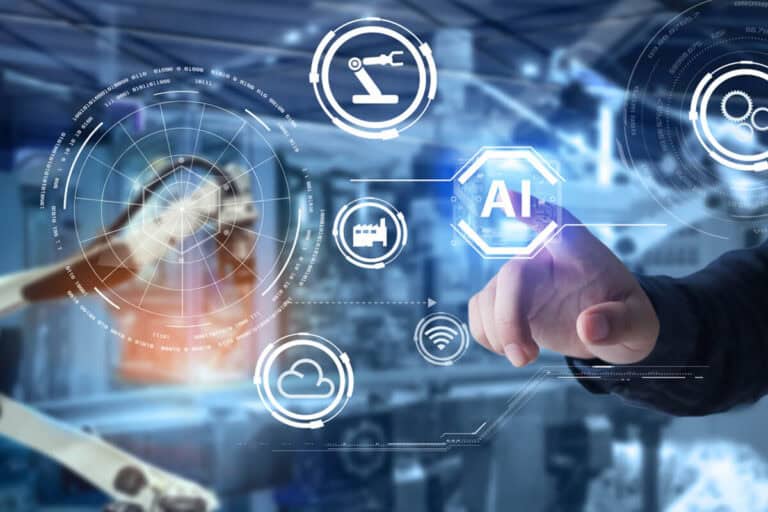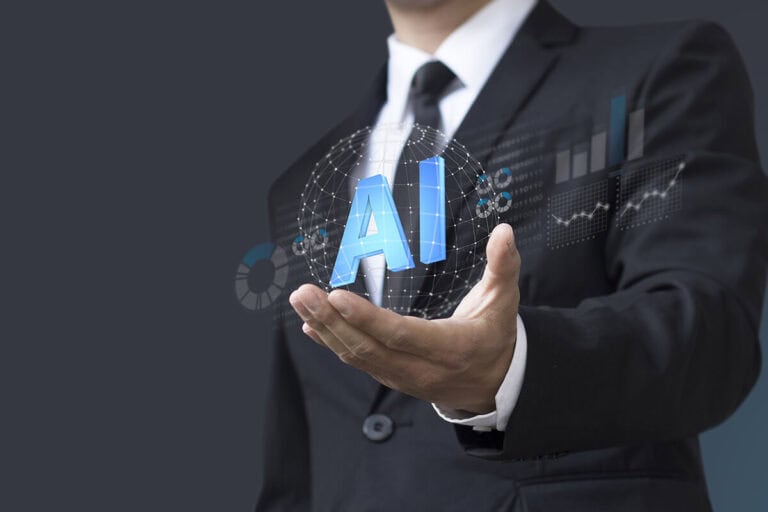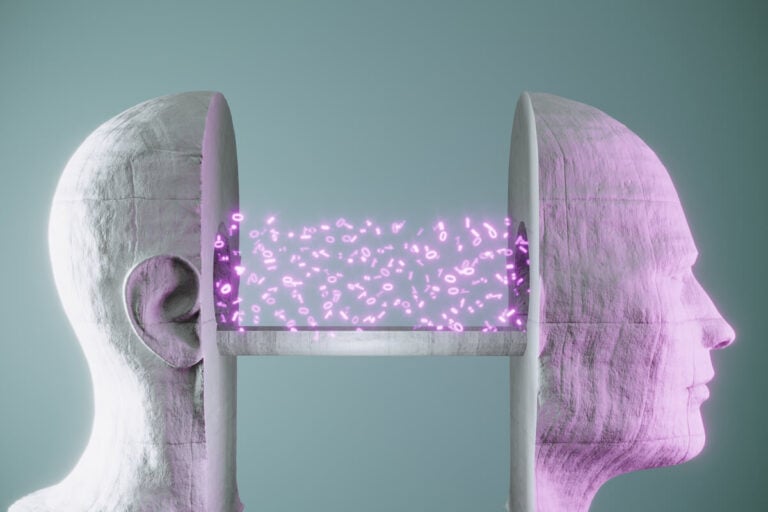Slowly but surely, artificial intelligence (AI) is creeping into the workplace, creating fear that the technology will progress to the point where it will replace the human workforce entirely.
Table of Contents
ToggleWe’ve heard it a million times – “The robots are coming to take our jobs.” It’s like something from a space movie.
In the past, perhaps just a decade ago, the words may have seemed empty – the threat too far off to worry about. After all, when it comes work – running businesses, serving customers, programming computers, driving buses and flying planes – humans are indispensable, aren’t they?
Aren’t they?
We can’t be so sure anymore. With the rise of artificial intelligence, science fiction is fast becoming science fact.
Get ready for the robots. We’ve researched five jobs where AI may soon replace human workers – and one or two may surprise you!
1. Administrative Assistant
Google made waves recently by demonstrating a remarkably human-sounding AI-powered personal assistant booking a haircut appointment over the phone for its (imaginary) client. If you missed it, check out the video below. We were wowed by how well – and how naturally – this test-bot was able to communicate.
(Video source: youtube.com)
From Apple’s Siri to Amazon’s Alexa, virtual assistants are gradually finding their way into our everyday lives – and it won’t be long until they start playing a bigger role in our business lives, too. Beyond booking a trim at the salon, it’s not hard to imagine how a virtual PA could organize conference calls, cancel meetings, or even mine business data to help with decision-making. The robots may indeed be coming for your PA job soon.
2. Rideshare Driver
As companies like Uber and Lyft edge out the taxi industry, many car owners have been able to find employment as on-call chauffeurs and make good money with flexible hours. However, self-driving cars could soon put pay to the role of rideshare driver.
Autonomous vehicles are already being tested around the world – even by the rideshare companies themselves. Uber, for example, is heavily invested in developing the technology – though testing of fully-automated vehicles is currently on hold following an accident that led to the tragic death of 49-year-old Elaine Herzberg this March.
(Image source: flickr.com/photos/zombieite)
Some riders may be pleased by a silent autonomous driver (though no doubt AI-powered cars will eventually be able to chat away as naturally as Google’s virtual assistant), but the rise of this technology may one day put human ridesharing drivers out of work for good – not to mention condemning traditional taxi (and bus) driving jobs to the history books.
3. Motion Capture Animator
Both the video games and movie industries employ expensive and equipment-heavy motion capture systems to record and digitally replicate human and animal movement and turn it into art.
This kind of effort takes many hands and lots of cameras – but a new startup called RADiCAL is making motion capture animation simpler and much more accessible.
Psyched that @RADicalMotion pre-registration is open at getrad.co.
Sign up now for free, early access to #AI powered #3D #motioncapture – right from your phone.
Thanks to @ks_accelerator, @nvidia, @googlecloud, and @awscloud for their support!#MachineLearning pic.twitter.com/bi7HT4ThDY
— RADiCAL (@RADicalMotion) 8 February 2018
(Tweet: @RADicalMotion)
Forget about hardware, green screens, studios, special suits and sensors. All you need to create professional-looking 3D motion capture animations is the 2D camera on your phone and the RADiCAL app.
Users simply shoot their video, upload it to the cloud, and it will then be AI-processed to detect, reconstruct, and represent human or animal motion in a virtual 3D space.
“RADiCAL’s AI integrates techniques, tools and science from deep learning, robotics, computer vision and biomechanics,” says RADiCAL’s co-founder and CTO Anna-Chiara Bellini. “[Using] probabilistic techniques and motion science, we reconstruct what a single 2D camera can’t see, automatically adapting to different body proportions.”
AI technology like this results in saved time, fewer cameras, and less work. It also means less manpower is required to record and manipulate motion capture data. Consequently, motion capture animators may soon have less and less of a hand in this aspect of the job.
4. Lawyer
Wait – lawyer? Surely this decidedly human profession could never be replaced by artificial intelligence.
Well, AI may not be capable of arguing case law just yet – but an artificial intelligence platform recently outperformed a group of lawyers in identifying risks within Non-Disclosure Agreements (NDAs).
The AI program – LawGeex – was 94% accurate in reviewing five NDA contracts containing 153 paragraphs of dense legalese (i.e. formal and technical legal language). By comparison, the lawyers – 20 of them with years of experience under their belts – achieved just 85% accuracy on average. The highest-performing lawyer did manage to match the AI, achieving 94% accuracy. However, the lowest-performing lawyer only achieved 67%. Perhaps more remarkably, it took the lawyers an average of 92 minutes to review the five NDAs. LawGeex was done and dusted in just 26 seconds.
(Image source: lawgeex.com)
5. Kitchen Assistant
When imagining the prime target for robotic replacement, the first image to spring to mind is usually that of someone performing a repetitive task – like someone flipping burgers in a fast food joint, for instance.
Meet Flippy – an AI-powered burger flipping robotic fry cook, recently employed (and then sacked for being so good at its job its human colleagues couldn’t keep up) by CaliBurger at a restaurant in Pasadena, California.
(Video source: misorobotics.com)
Combining a jointed arm – to flip the patties and scrape the grill – with cloud-based artificial intelligence and thermal vision to tell when a burger is cooked through, Flippy can fry 150-300 burgers per hour, and is specifically designed to operate in an existing commercial kitchen layout.
With such efficiency and reliability, at what point does Flippy give the human side of the kitchen team its robotic elbow out the door? We’ll soon see – though Flippy’s trial run didn’t go as smoothly as planned, the bot is being installed in more than 50 CaliBurger locations around the world by the end of 2019.
Hope in a World of Artificial Intelligence?
Artificial intelligence and robotic solutions will almost certainly take over many labor tasks traditionally performed by us mere mortals. However, in doing so, it mustn’t be forgotten that they will also open up new avenues of employment, and, by handling those routine tasks, free up human counterparts to better attend to more creative matters.
With a virtual assistant taking care of phone calls and keeping diaries up-to-date, human PAs can concentrate on helping executives develop ideas for company success, or liaising with staff, suppliers and clients. Freed from the toils of operating multi-camera setups and dressing actors in sensors, motion capture animators can dedicate more time to making visually-stunning artistic choices. Kitchen assistants can toss their spatulas to bots like Flippy and become “culinary-program administrators”, responsible for inventing and then programming new dishes into the machine. Although AI may perform better than humans in reviewing contract law, it’s still a long way away from developing common sense – and lawyers will always need plenty of that.
Artificial intelligence requires technicians, and managing robots will, by necessity, simply become a newer form of employment. This has been true throughout history – technology obviates old jobs, but at the same time creates new ones. The robots are coming – but the working world will evolve in time with AI, and it will more likely be a case of our jobs being made more streamlined and efficient alongside its presence, as opposed to us losing them once and for all to the rise of the machines.
Summary:
5 Jobs Artificial Intelligence Could Replace Soon
1. Administrative Assistant. 2. Rideshare Driver. 3. Motion Capture Animator. 4. Lawyer. 5. Kitchen Assistant.”








